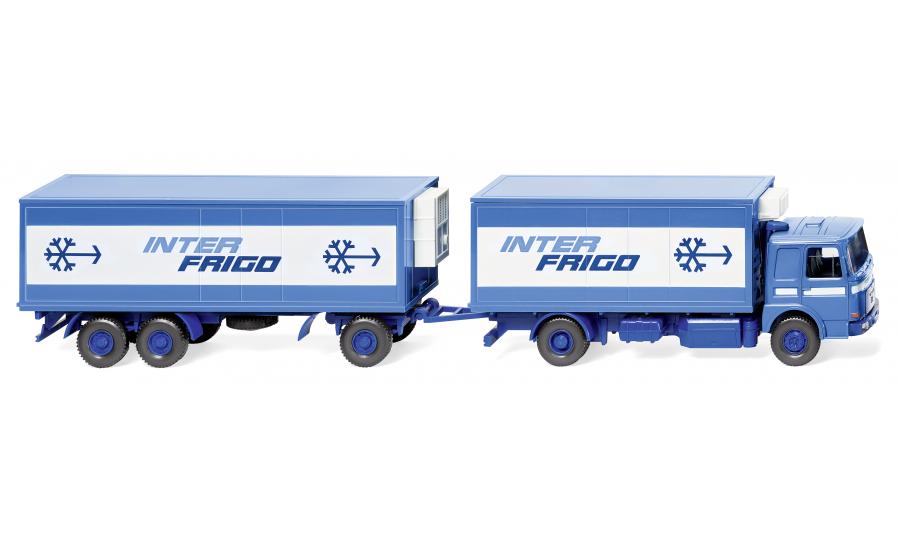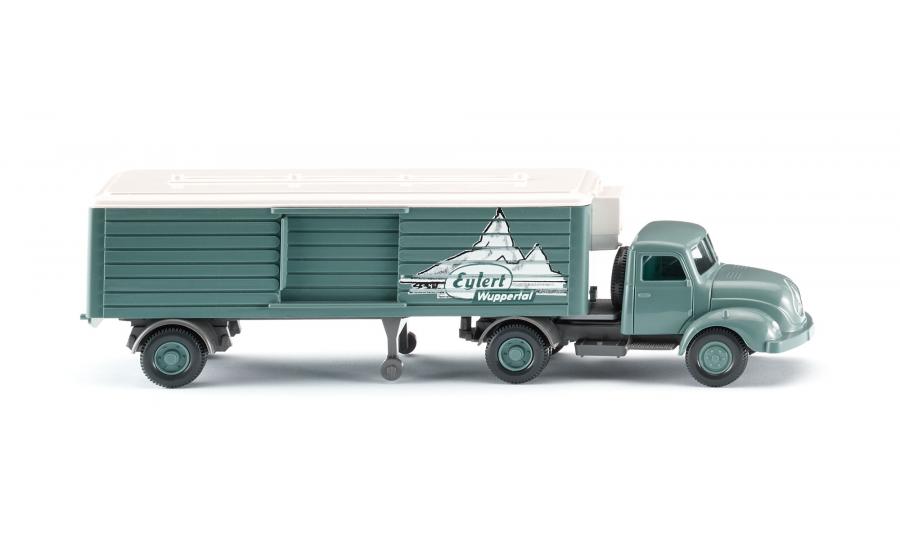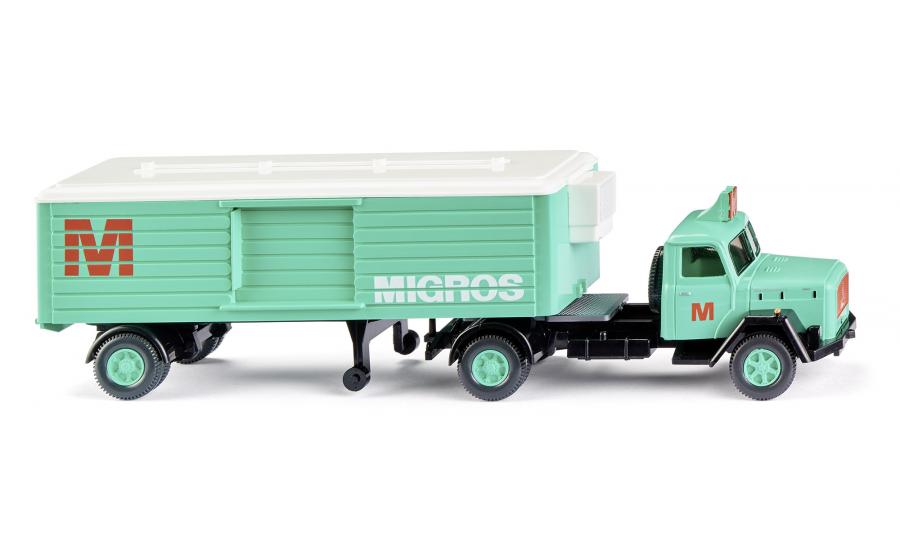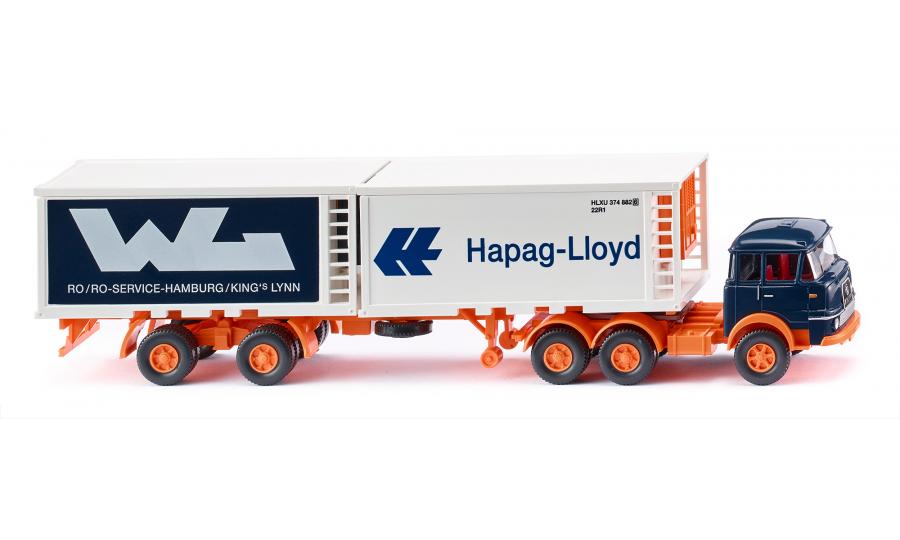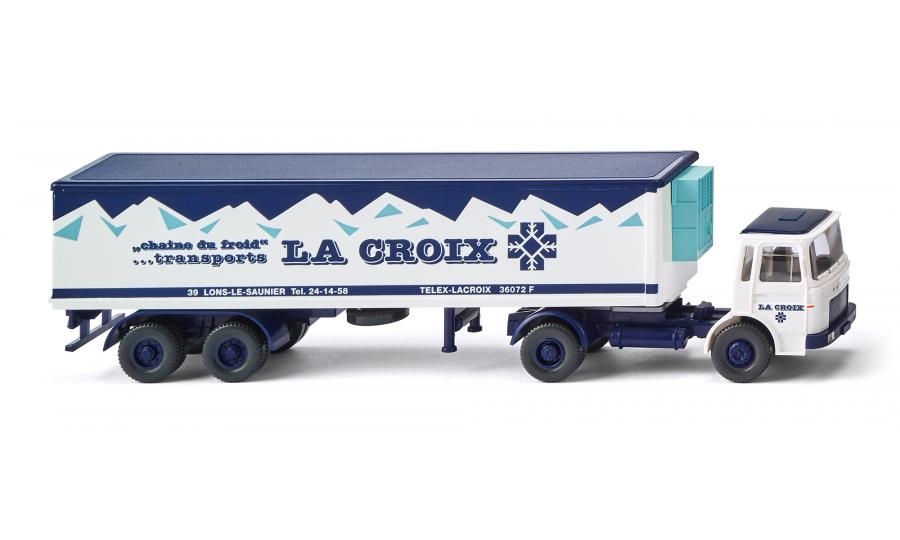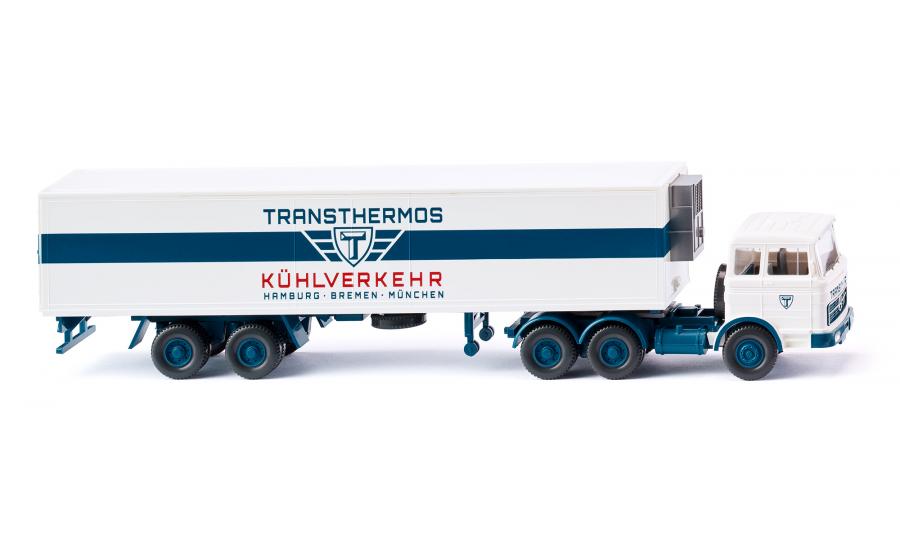- This is how fresh fruit used to reach German retailers
- Railway companies built a continuous network
- WIKING complements the railway wagon with a lorry
Interfrigo used to ensure that the cooling chain remained intact over long distances – employing an MAN refrigerated road train draped in the same company colours as the automotive extension of the railway transport. By including this new model in their June delivery WIKING is sharing a major piece of railway history from a time when the continuous cooling chain was in the hands of Europe’s railways. And, this is exactly where the name Interfrigo originated. Model railroaders are only too familiar with the significance held by the ubiquitous H0 wagons, which the traditional model makers are now pairing with a lorry of the same name. This pairing is well-warranted given the fact that Europe’s railway companies in the years after the war were entrusted with the task of hauling easily perishable fruits and other goods to their destination without disrupting the cooling chain – a growing market! A job that crossed the borders in Europe. To share the burden, all activities in the refrigerated transport business were coordinated as early as 1949 when the “Société Ferroviaire Internationale de Transports Frigorifiques“, Interfrigo for short, was founded as a joint umbrella organisation. From then on, several thousand wagons criss-crossed Europe for decades bearing the grand Interfrigo logo. The first countries to join with their railway administrations were Belgium (SNCB), Great Britain (BR), France (SNCF), Italy (FS), the Netherlands (NS), and Switzerland (SBB).
Refrigerated road trains continued the journey of the refrigerated goods on the road
Other railway administrations came on board, such as those of Germany (DB) in 1959 along with Greece (OSE), Luxembourg (CFL), Spain (RENFE), Turkey (TCDD), and Denmark (DSB). The responsibility for managing the operations was vested in each nation’s refrigerated transport companies. Operating on a schedule, Interfrigo transported such goods as fruit, vegetables, dairy products, meat and tropical fruits along with fish and bananas from major seaports to their final destinations. Over time, the transport of smaller loads via refrigerated roads continued to gain in importance. In 1993, Interfrigo was merged with “Intercontainer”, which had been established already in 1967. Until it was dissolved, the logistics business operated under the name of “Intercontainer-Interfrigo SA” (ICF).


